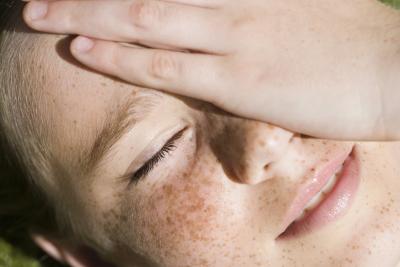Nighttime can be a scary for young children, especially if they have trouble seeing in the dark. Night blindness, also known as nyctalopia, is caused by retinal cells in the eye not functioning properly, a problem that can occur in children for a number of reasons. If your child is excessively afraid of the dark, talk to his pediatrician about the possibility of night blindness and acquaint yourself with the problem’s possible causes and treatments.
About Night Blindness
The eyes of people who suffer from night blindness are unable to adjust to darkness or dim lighting, making them essentially blind in anything except full light. Night blindness can manifest itself in young children as an inordinately strong and persistent fear of the dark, difficulty walking in a dimly lit room without tripping or bumping into objects and trouble sleeping through the night.
Causes
All types of night blindness are caused by the retinal cells in the eye not working properly; however, these cells can malfunction for a number of reasons. In children, the most common reasons are myopia, or short-sightedness; keratomalacia, which is a deficiency of the nutrient Vitamin A; and, in some cases, a genetically inherited disorder known as retinitis pigmentosa.
Identification
If you are the parent of a child who seems afraid of the dark, pay attention to a few key details. Determine if your child’s night fears disappear when she is provided a night light. Find out if there is any family history of difficulty with vision in the night. Keep track of your child’s behavior, and let your pediatrician know if there seems to be a definite connection between darkness and fear on your child’s part.
Treatments
If your child is diagnosed with night blindness, the treatments available will depend on the underlying cause of the problem. Your child may need a prescription for eyeglasses if an exam determines he is myopic, while children who suffer from retinitis pigmentosa may require a therapy that includes supplements of docosahexaenoic acid, or DHA, and vitamin A. Vitamin A therapy, along with a diet rich in quality protein, is also used to treat vitamin A deficiencies.
What You Can Do About It
Speak to your child’s pediatrician if your young child complains of not being able to see in her room at night, is terrified of the dark or has persistent problems sleeping through the night. Try providing a night light in your child’s room and make certain that foods rich in Vitamin A — milk, cheese, carrots and orange-colored fruits like cantaloupe and apricots — are a regular part of your family’s diet.





